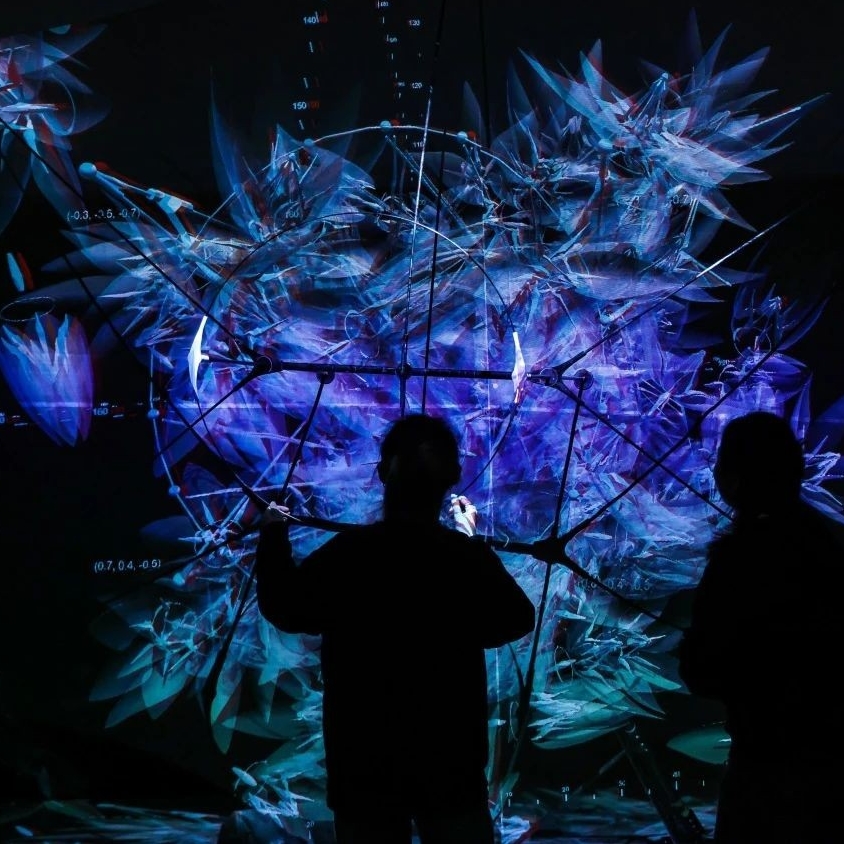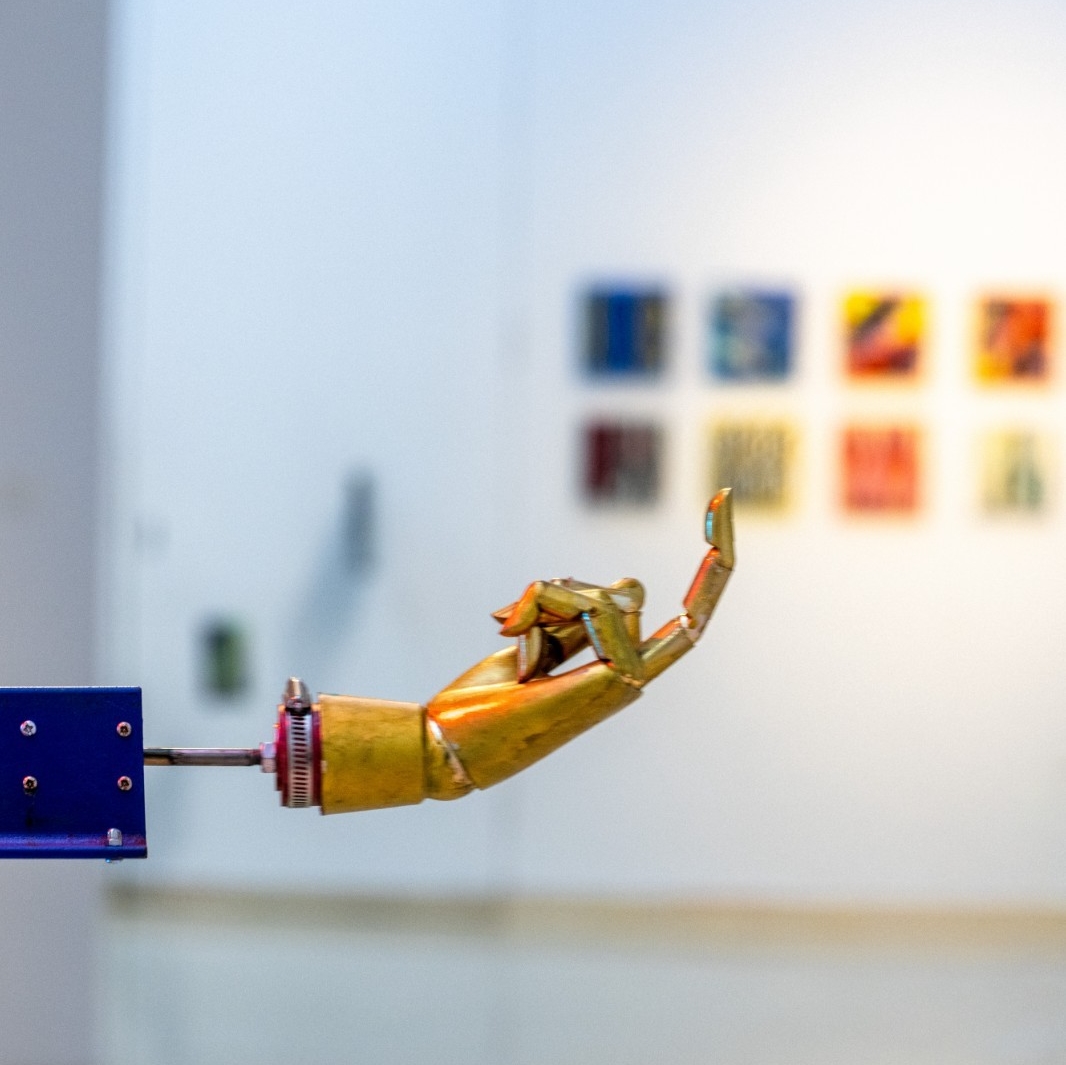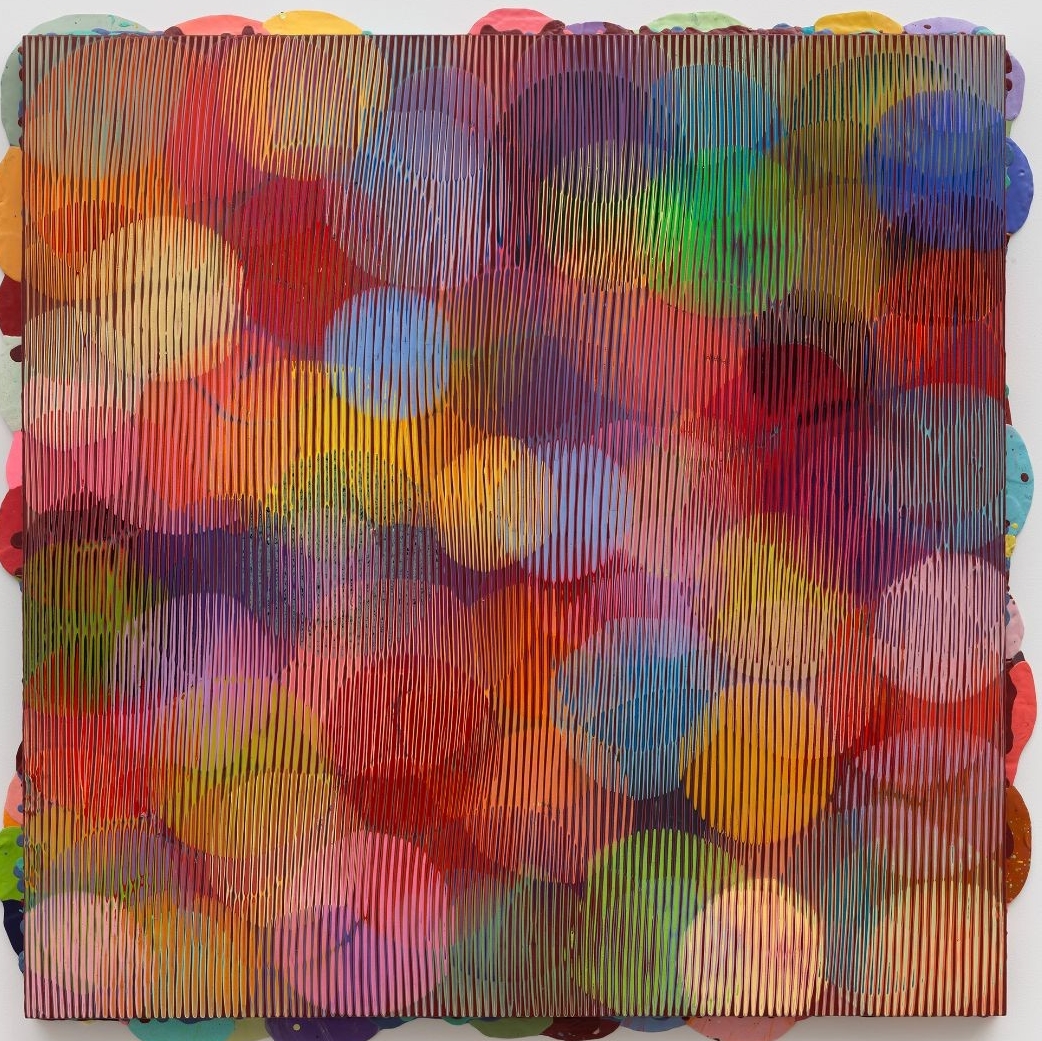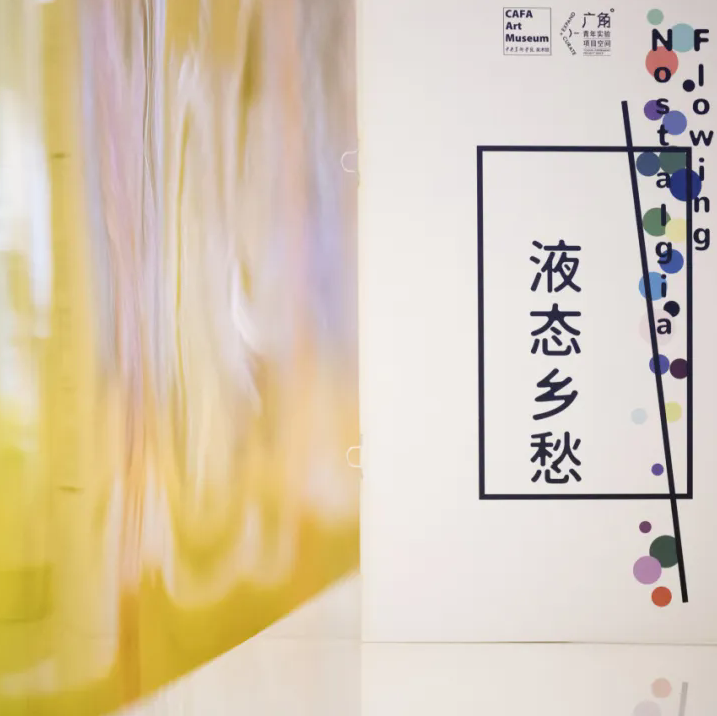While walking into the gallery of Long March Space, one may feel like being confronted with the font display wall at a print shop. It is full of words, in various colors and shapes as if every visitor is surrounded by “words.” They seem to be abstracted, and have become images somewhere between the recognizable and the unrecognizable. They are words, but not just words. Visitors in the exhibition are exposed to the world of words, which makes us who are familiar with electronic screens but have increasingly been far away from paper media feel both familiar and strange, perceptible and detached.

 Installation View of “Wu Shanzhuan: Word Squaring the World” at Long March Space, Beijing. Courtesy of Long March Space.
Installation View of “Wu Shanzhuan: Word Squaring the World” at Long March Space, Beijing. Courtesy of Long March Space.
“Word Squaring the World” unveiled on 22nd June, 2024, showcases over a hundred works by Wu Shanzhuan since 1985. After the recently concluded “from paper to paper: Inga Svala Thorsdottir +Wu Shanzhuan”, Wu once again shows the audience his profound thinking on the relationship among words, objects and people through his unique artistic expression and keen social insight. This exhibition does not review Wu's artistic career over the past 40 years, but it also systematically sorts out and recreates Chinese characters and their cultural background. If “from paper to paper” is “a prelude to the research, exhibitions and publications that Inga Svala Thorsdottir + Wu Shanzhuan will continue to carry out going forward, “ as Liu Tian wrote in the preface for the exhibition, “Word Squaring the World” can be taken as a magnificent concerto and a dense display of writing history. Liu Tian, curator of this exhibition and researcher regarded it as another presentation of this long-term promise.


 Installation View of “Wu Shanzhuan: Word Squaring the World” at Long March Space, Beijing. Courtesy of Long March Space.
Installation View of “Wu Shanzhuan: Word Squaring the World” at Long March Space, Beijing. Courtesy of Long March Space.
In Wu Shanzhuan's creations, words do not appear to be read, nor do they provide people with a sense of beauty like calligraphy. Actually, Wu’s selection of boldface without “expression” rather than CALLIGRAPHY originated from the idea held by Wu that Chinese characters themselves were already artworks. As a result, Wu developed the creation and writing of CHARACTER IMAGES: if we ignore the meaning of Chinese characters, we can regard them as an aesthetic image.

 Installation View of “Wu Shanzhuan: Word Squaring the World” at Long March Space, Beijing. Courtesy of Long March Space.
Installation View of “Wu Shanzhuan: Word Squaring the World” at Long March Space, Beijing. Courtesy of Long March Space.
This reminds us of text in the background of a Cubist collage, an art form in which the artist simply used text as a component within the image. Similarly, in Pop Art, words are free from “Logocentrism” and they deconstruct the system of pronunciation and semantics, making them symbols of culture. In these works, text is no longer just a component of the image, but a symbol with emblematic meaning. Wu Shanzhuan is one of the forerunners of Chinese Pop Art. His artistic expression full of burlesque and ridicule of contemporary society first attracted widespread attention in the Chinese contemporary art world, which can be traced back to the Rauschenberg’s Exhibition in 1985.

 Installation View of “Wu Shanzhuan: Word Squaring the World” at Long March Space, Beijing. Courtesy of Long March Space.
Installation View of “Wu Shanzhuan: Word Squaring the World” at Long March Space, Beijing. Courtesy of Long March Space.
Wu was one of the earliest pioneers to integrate propaganda poster images into artistic creation, and he boldly used pop language, such as advertisements and daily language. Meanwhile, he formed an artistic style of humor and irony through experimental artistic techniques such as forged Chinese characters and ironic linguistic symbols. The “Red Humor” series that he produced in this period heralded the arrival of the “Political Pop” in the 1990s and became an important prelude to this art movement.
In Wu Shanzhuan’s art world, PUN: DEFICIT (CHI ZI), both in Chinese means RED CHARACTER and deficit in the sense of loss. He reveals the power structures and ideologies behind Chinese characters by redesigning and interpreting them. In particular, he paid attention to “The Second Simplification of Chinese Characters (Draft) Proposal” released in 1977. This controversial simplification plan of Chinese characters became an important starting point for him to explore the relationship between characters, politics, and culture. By rearranging and creating these characters, he critically reflected history and reality.

 Installation View of “Wu Shanzhuan: Word Squaring the World” at Long March Space, Beijing. Courtesy of Long March Space.
Installation View of “Wu Shanzhuan: Word Squaring the World” at Long March Space, Beijing. Courtesy of Long March Space.
TODAY NO WATER is the almost-700-thousand-character novel that was created by Wu from the ‘85 New Wave till the late 1990s. These texts have now become nostalgic documents and continue to be accumulated, and the texts we have experienced will also become new components of history: for example, in the 21st century, the pixelated text of SMS (Short Messaging Service) are accompanied by new ways of social communication. Less than two decades later, SMS as a communication method quickly disappeared, WeChat became the new main force in communication, and AI models seemed to be more fluent and knowledgeable than human conversations.

 Installation View of “Wu Shanzhuan: Word Squaring the World” at Long March Space, Beijing. Courtesy of Long March Space.
Installation View of “Wu Shanzhuan: Word Squaring the World” at Long March Space, Beijing. Courtesy of Long March Space.
In the exhibition, we can see the “patterns” from each generation of texts recorded by the artist. Their contents are no longer important, nor are they intended to be read. The artist believes that the signifier does not clearly correspond to a certain referent at first. Every word we think has a clear meaning is actually a “DEFICIT” in the sense of loss.

 Installation View of “Wu Shanzhuan: Word Squaring the World” at Long March Space, Beijing. Courtesy of Long March Space.
Installation View of “Wu Shanzhuan: Word Squaring the World” at Long March Space, Beijing. Courtesy of Long March Space.
Even though this exhibition focuses on the world of “words,” if one wants to explore Wu Shanzhuan’s creations, another key word that must be mentioned is “thing.” Thing’s rights are also the core of Wu and his partner Inga’s creations. Wu Shanzhuan's works often make people feel enigmatic, largely due to this “DEFICIT” spiritual core. This unreadable quality makes his works appear abrupt, mysterious and rejecting. The texts in his works are “DEFICIT” which are annotated by the epoch, marked by the artist’s experience and endowed with meanings by various visitors through their own interpretations. Therefore, these words seem to be empty but free.


 Installation View of “Wu Shanzhuan: Word Squaring the World” at Long March Space, Beijing. Courtesy of Long March Space.
Installation View of “Wu Shanzhuan: Word Squaring the World” at Long March Space, Beijing. Courtesy of Long March Space.
In the center of the exhibition hall is “Empty Red”, which was produced based on the real space of Wu’s studio. A cordon was raised and it refuses the “injection”of visitors, but the thinking triggered when people see it will still become footnotes enrich the connotation of this red hollow cube. “Red” here may have become a “DEFICIT” that can be injected with different meanings.
The characters fill up the gallery, they occupy our eyeballs, evoking memories, and they are full; but these characters have no clear meaning, they are obscure, waiting to be injected, and they are empty. “We present characters nakedly. Let us be naked in the CONCHARACTER,” as the Preface quoted from Wu’s words. When we walk into it openly, we will find that this is the world of characters, and it is also our world.
Text (CN) by Jia Qianfan, abridged (EN) by Sue/CAFA ART INFO
Image Courtesy of Long March Space.
About the Exhibition
 Curator: Liu Tian
Curator: Liu Tian
Dates: 2024.6.22 – 2024.10.27
Venue: Long March Space, Beijing




























